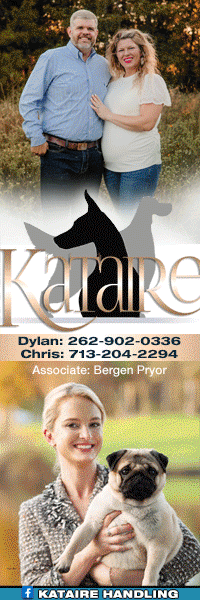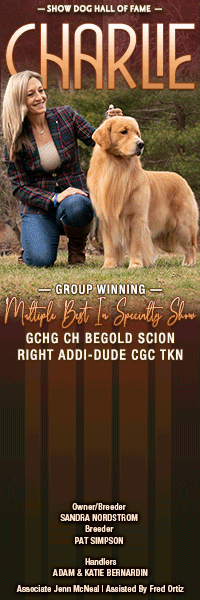Judging The Butterfly Dog
 By: Joanne (Jan) Paulk, Chairman, Judges Education, Papillon Club of America
By: Joanne (Jan) Paulk, Chairman, Judges Education, Papillon Club of America
“Fine-boned, dainty, elegant,” is the take-away phrase from a Papillon Seminar. Add the requisite “happy, alert and friendly” and you are on your way to understanding this delightful breed.
Popular with both conformation and performance enthusiasts, the Papillon is athletic in a ballet dancer sort of way.
When judging the breed, keep table time to a minimum. You should examine with a gentle touch and a soft, friendly voice. Reassure the handler that the dog need not stand totally still and that a wagging tail is a plus. These are butterflies not statues. Forgive curiosity and refusing to stand still and value the unique “lightness of being” and the heavenly silky single coat. Never forget: examine on the table and judge on the ground!
On the ground, I recommend insisting that the Papillon stand on his own for at least part of the evaluation. Anyone can hold a dog together, but a Papillon with the correct temperament will essentially show himself…somewhat like another adorable Continental Toy Spaniel, the Cavalier King Charles Spaniel.
 Papillons should be sound dogs with good legs, balanced, moderate, slightly longer than tall, scissors bite, black pigment no matter the color of markings, teacup tail, and a graceful gait with usual canine action. (no anomalies of movement like their competitors in the Toy Group: the MinPin, the Havanese, the Pekingese)
Papillons should be sound dogs with good legs, balanced, moderate, slightly longer than tall, scissors bite, black pigment no matter the color of markings, teacup tail, and a graceful gait with usual canine action. (no anomalies of movement like their competitors in the Toy Group: the MinPin, the Havanese, the Pekingese)
Judging is always a balancing act. A hallmark of this breed is the large, rounded ear. You simply cannot have a Papillon worthy of the title Champion without the correct ear. Fringe is glamorous and we love it, but it must hang from the correct ear. Perhaps sad to say, but a small, pointed ear should not be excused in favor of good legs. Think type! The Phalene is judged exactly like the Papillon except for ear carriage.
Do not ask the Papillon to “give you ears” on the table. If one does: great! but don’t make it a requirement. The Papillon will probably look at you when he is on the ground, but he loves his handler/owner and they will receive the lion’s share of the Pap’s attention. You may want to stand behind the shoulder of the handler to see that famed sweet Spaniel expression.
A shy or aggressive temperament is unusual and should never be forgiven.
The Papillon is a measurable breed, but only at the top. Over 11” is a fault and over 12” is a DQ.
The current weakness of the breed is long and low. “Slightly longer than tall” allows for variations, but not to the extent of long and low!
I suggest standing behind the Papillon and see the butterfly illusion made by the ears. Old timers say the blaze is the body of the butterfly and the ears are the wings.
And, most importantly, read and study the Papillon Standard each time before you venture into the ring to adjudicate the butterflies of the dog world.
Joanne (Jan) Paulk finished her first Papillon at The Westminster Kennel Club in 1977. She now judges the Toy, Herding, and Working Groups, ten Non-Sporting breeds, Junior Showmanship, and Best in Show.
Short URL: http://caninechronicle.com/?p=31396
Comments are closed











